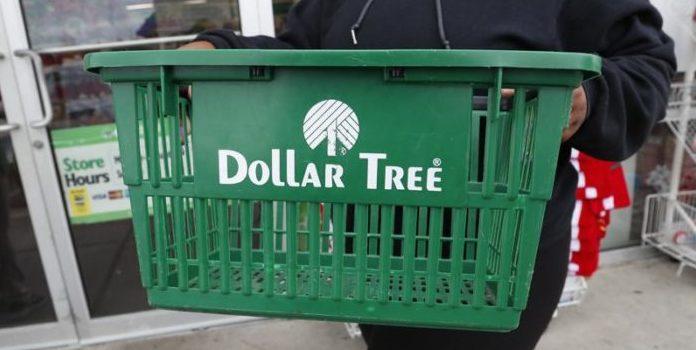() President Joe Biden is blaming corporations for high prices and “shrinkflation.”
Business executives and many economists disagree, arguing the real problem is inflation created by federal deficit spending policies.
Ahead of the Super Bowl, Biden tweeted a video saying, “While you were Super Bowl shopping, did you notice smaller-than-usual products where the price stays the same? Folks are calling it Shrinkflation and it means companies are giving you less for every dollar you spend. I’m calling on the big consumer brands to put a stop to it.”
While you were Super Bowl shopping, did you notice smaller-than-usual products where the price stays the same?
Folks are calling it Shrinkflation and it means companies are giving you less for every dollar you spend.
I’m calling on the big consumer brands to put a stop to it. pic.twitter.com/wL1NsEh78F
— President Biden (@POTUS) February 11, 2024
The Center Square first reported on shrinkflation in May 2022 noting that consumers were paying more for less on everything from food to toiletries to services they purchase.
The president is nearly two years behind on understanding the consequences of his administration’s own policies, critics argue. Inflation skyrocketed to 40-year highs after continued deficit spending led to higher costs.
“The general population will not be duped by this aversion to try and blame inflation on corporate America,” Bob Nardell, former CEO of Home Depot and Chrysler, told Fox Business.
Inflation has led to high costs of materials, goods and services, and higher wages. However, businesses say they cannot afford high interest rates, which is why “we’re seeing a tremendous shift in employment out there where people are being laid off,” Nardell said, raising concerns about recent auto and tech industry layoffs.
According to Layoffs.fyi, which tracks layoffs in the technology sector, 149 companies have laid off nearly 39,000 employees so far this year, as the Wall Street Journal warned last month that a tech rally in the stock market was “a worrying sign.”
Tech companies reporting the greatest number of layoffs appear to be headquartered in the San Francisco and Seattle areas, including Cisco (4,250), PayPal (2,500), Microsoft (1,900), eBay (1,000), VMware (2,837), Qualcomm (1,258), Wayfair (1,650), among others.
Since 2020, four companies that appear to have laid off the most employees are Google (12,000), Meta (21,000), Microsoft (10,000), and Amazon (27,000), according to the tracker.
In the last two weeks, Ford Motors, GM, UPS, Citigroup, Paramount Global, Estée Lauder and others announced massive layoffs. This is after major chains announced store closures and layoffs last year, including Tuesday Morning, David’s Bridal, Sears, Foot Locker, CVS, Walgreens, Pizza Hut, Boston Market and Macy’s.
Shrinkflation is a consequence of high interest rates and deficit spending, Nardell said. Biden’s comments were about “trying to buy votes. This is all about an administration that is out of control,” he said, referring to deficit spending. “We have a strong bias towards spending versus having a conservative policy or a sustainable future.”
A new Economic Policy Innovation Center brief argues that Americans’ purchasing power has decreased because of high budget deficits driving inflation.
The federal government “borrowed heavily to meet its spending needs in 2020 and 2021, and that borrowing was converted by the banking system into funds that fueled the rise in prices.”
Deficits totaled $8.8 trillion in fiscal years 2020 through 2023, the brief notes, adding, “Outside of wartime, no four years in U.S. history has seen deficits this large, either in nominal terms or as a percent of GDP.”
Deficit costs drove up consumer loans by more than 19%, real estate loans by over 12% and banking system loans to nearly 14%.
“The last time there was such a jump in lending was in the run-up to the Great Recession, 2005 and 2006,” the report states.
Nardelli said he wasn’t sure if the general public understands that high interest rates “are killing” middle and lower-market companies.
The Federal Reserve raised the Fed funds rate 11 times between March 2022 and July 2023, claiming it would curtail inflation.
At a Council on Foreign Relations discussion Thursday, Austan Goolsbee, president and CEO of the Federal Reserve Bank of Chicago, said that 50 to 100 years of central bank policy has held that “to significantly get inflation down more than 3% you have to have a deep recession.”
When the Fed said it would get inflation back to 2%, he said, “the world believed that.”
While the latest Consumer Price Index states inflation is at 3.1%, consumers remain skeptical with grocery and other costs still nearly double what they were a few years ago.
The U.S. Federal Reserve on Thursday also released its annual “stress test” scenario of how large lenders would fare in a severe economic shock.
It states the U.S. dollar would depreciate and nonprecious metal and other commodities, including oil and natural gas, would face large price increase from inflationary pressures under its hypothetical scenario.

